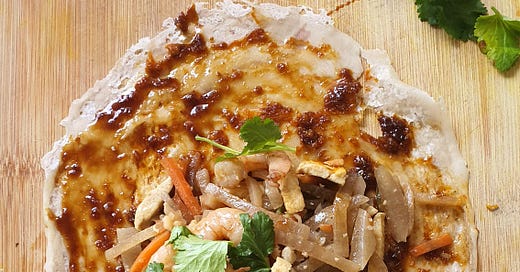Popiah
A big part of Singaporean eating culture is very social - we enjoy our hotpots (known as ‘steamboats’ locally), mookatas, and popiah parties. When describing popiah, one could say that it is somewhat like a burrito, but that would not do it any justice: a tissue-thin crepe swaddles braised jicama, crunchy cucumber, egg, and an abundance of other textural goodies. The dish has its roots in Fujian, home of the Hokkiens, where it is eaten during springtime, when vegetables are abundant. While Singaporean food culture is heavy on animal protein and scant on the veg, popiah is the one rare dish that gets locals to eat their greens with no complaints.
While my dad’s Hokkien, we never had popiah at home as it was my Cantonese mom who did most of the cooking. My husband Wex, on the other hand, is Hokkien through and through, and his family (both immediate and extended) has a tradition of hosting popiah parties several times a year. Wheat flour wrappers would be purchased by the kilogram from the popiah-maker down the road, and the rest of the condiments would be made from scratch and laid out on the table for guests to assemble their own popiah. Now that Wex and I have been together for more than ten years, I’ve eaten more than my fair share of homemade popiah, so when I stumble upon a memorable hawker version, I sit up and take notice.
I had come across the Marine Parade popiah entirely by chance. It was October last year and I was dispatching Plantasia orders in a warehouse unit when my dad texted, asking if I wanted anything from Marine Parade Hawker Centre. I looked up what was available and decided on popiah - the perfect fingerfood that doubles up as a balanced meal. The first thing I noticed about the two slender rolls was how impeccably neat and compact they were, so different from my own - always ambitiously stuffed and prone to breakage. At first bite, I was struck by the juiciness of the braised filling before the popiah exploded with flavour and texture in my mouth.
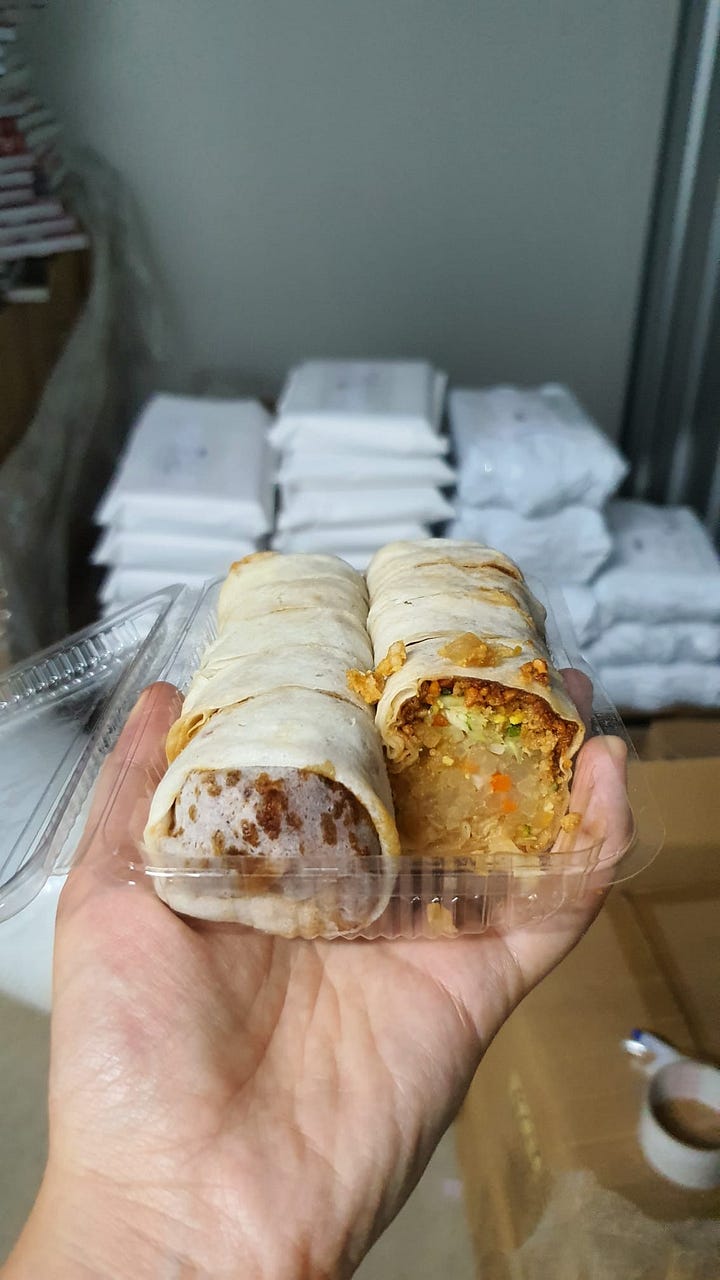
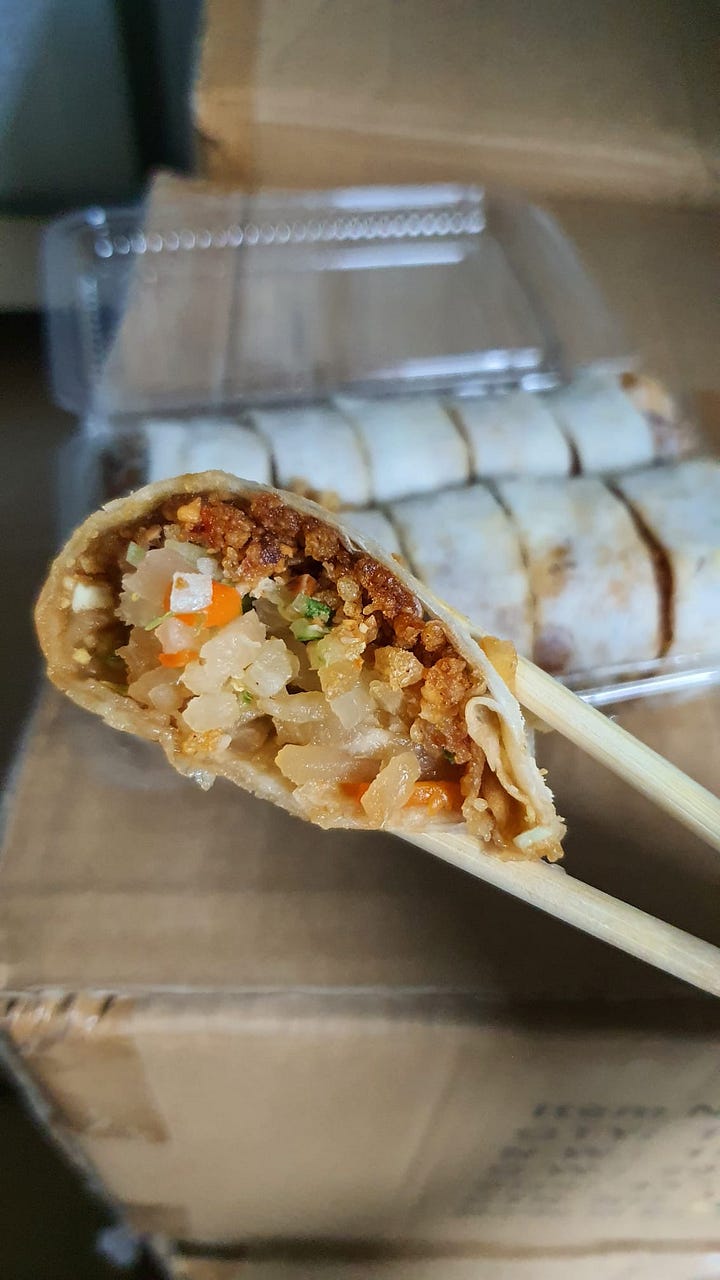
I tried to make out what the individual components were, but the symphony was so harmonious that it didn’t taste strongly of any one thing. While most consider the braised vegetables to be the heart and soul of popiah, this specimen had what seemed like a remarkably simple filling - no pork belly, prawns, or dried shrimp - and yet, when eaten as a whole, one felt no lack. Doing a bit of digging online, I learnt that the Marine Parade popiah is entirely vegetarian apart from the dried shrimp sambal that laces the popiah (vegan if you omit the egg), which made it all the more outstanding. After all, if one is able to coax so much flavour and texture without needing to resort to using an abundance of animal protein or luxurious ingredients, it says a lot about one’s competency as a cook.
The filling
Every family has their own version of popiah filling, but they all have one ingredient in common: jicama. Also known as bangguang in Singapore, this is a large bulbous root tuber with papery brown skin and mildly sweet flesh. The Nonya version, which I had learnt about while working at the Peranakan restaurant Candlenut, features hand-cut jicama and bamboo shoots braised in a luxurious prawn and pork broth. The Hokkien version tends to be simpler, eschewing the broth and relying instead on fermented soybean paste (taucheo), copious amounts of dried shrimp, and seasonings such as soy sauce and oyster sauce for umami.
Last year, I had reached out to Wex’s aunt, who’s a terrific cook, to ask how she prepares her filling. A windfall of chopped shallots and garlic goes into the pan with oil - she caramelises this in the pan before adding dried shrimp and fermented soybean paste as seasoning. The vegetables are a tricolour medley of jicama, carrot, and French beans. The outstanding simplicity of the Marine Parade popiah, however, convinced me to go for the simplest route - daikon (a great stand-in for the more obscure jicama) with carrot for a hint of colour, braised in nothing but soy sauce, water, salt, and oyster sauce.
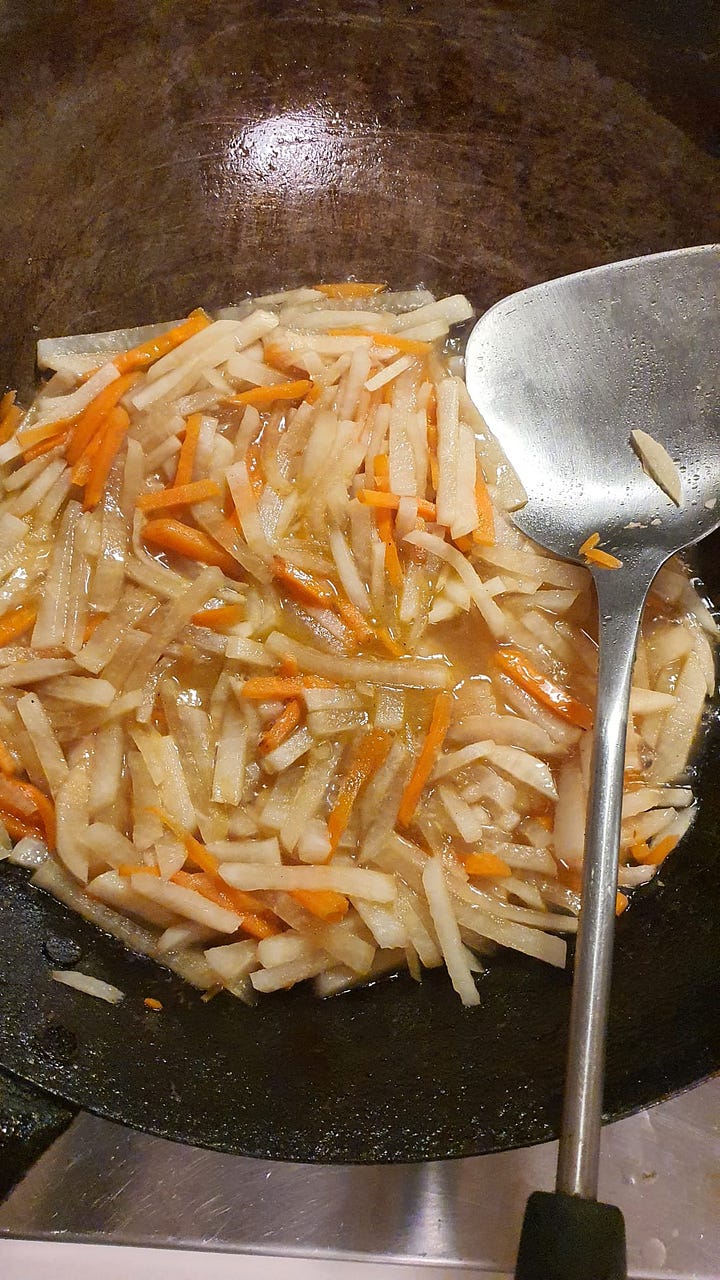
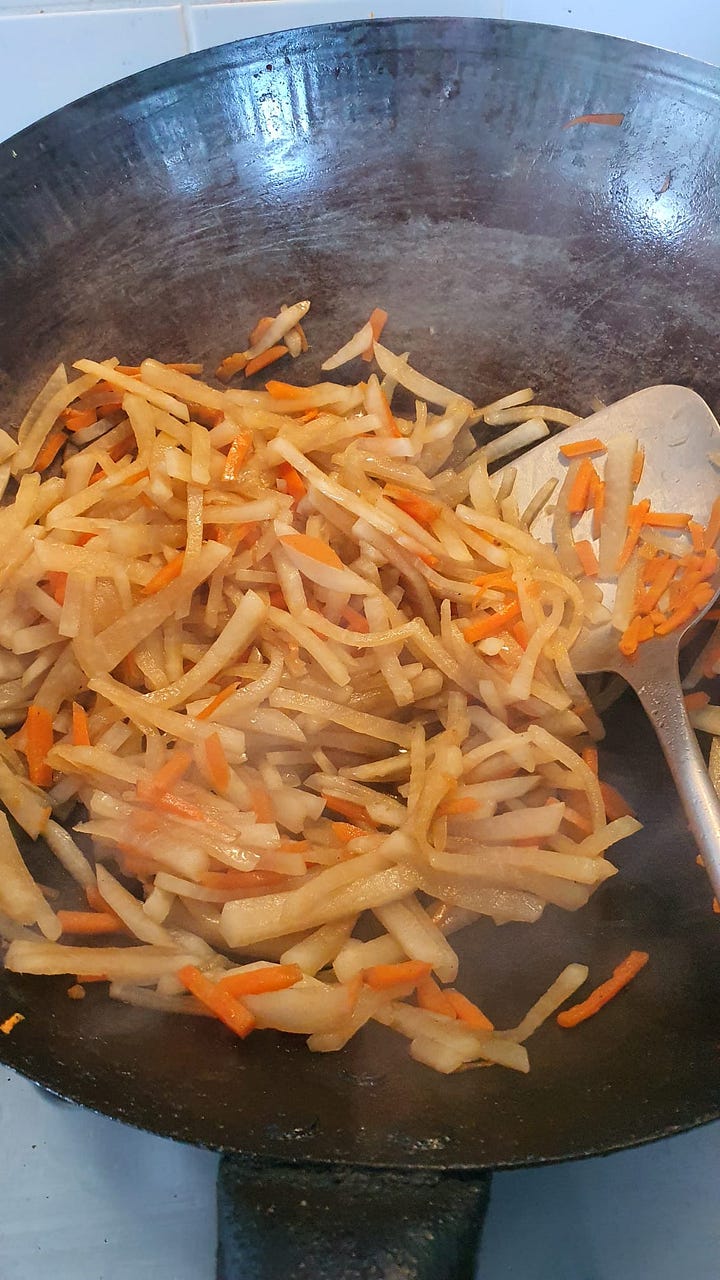
Crunchy bits
If braised jicama in a popiah is the melody of a song, then the crunchy bits are surely the bass notes; in a roll so packed with texture, they don’t immediately stand out, but you’ll certainly feel their absence. Some cooks use shards of lard, while Wex’s Ah Kim uses crunchy salmon skin that she purchases from the supermarket and crushes - expensive, but convenient and tastes good, she says. But perhaps what is most traditional are bits made by streaming a loose flour batter into hot oil which immediately puffs into strands and turns crunchy when cooled. This is what I opted for because that was what was in the Marine Parade popiah. I added egg to the batter for an extra rich flavour, but you can achieve the same level of crunch without egg if a vegan option is what is desired.
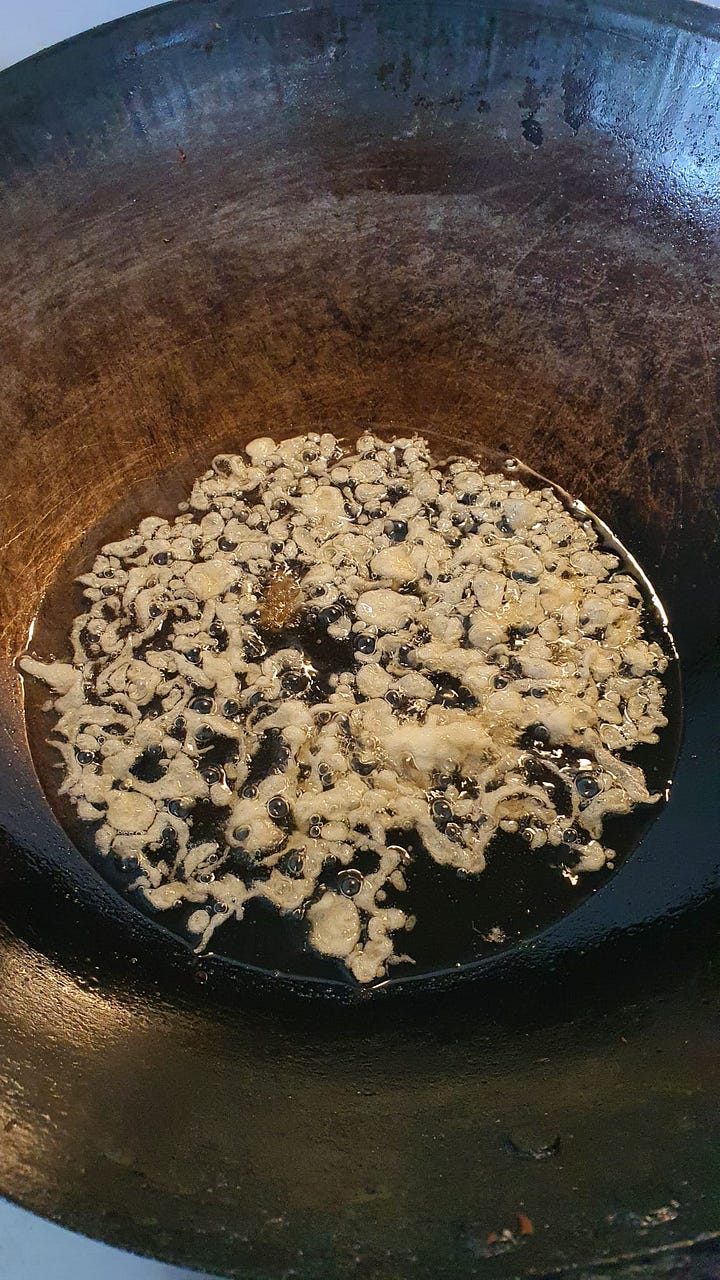
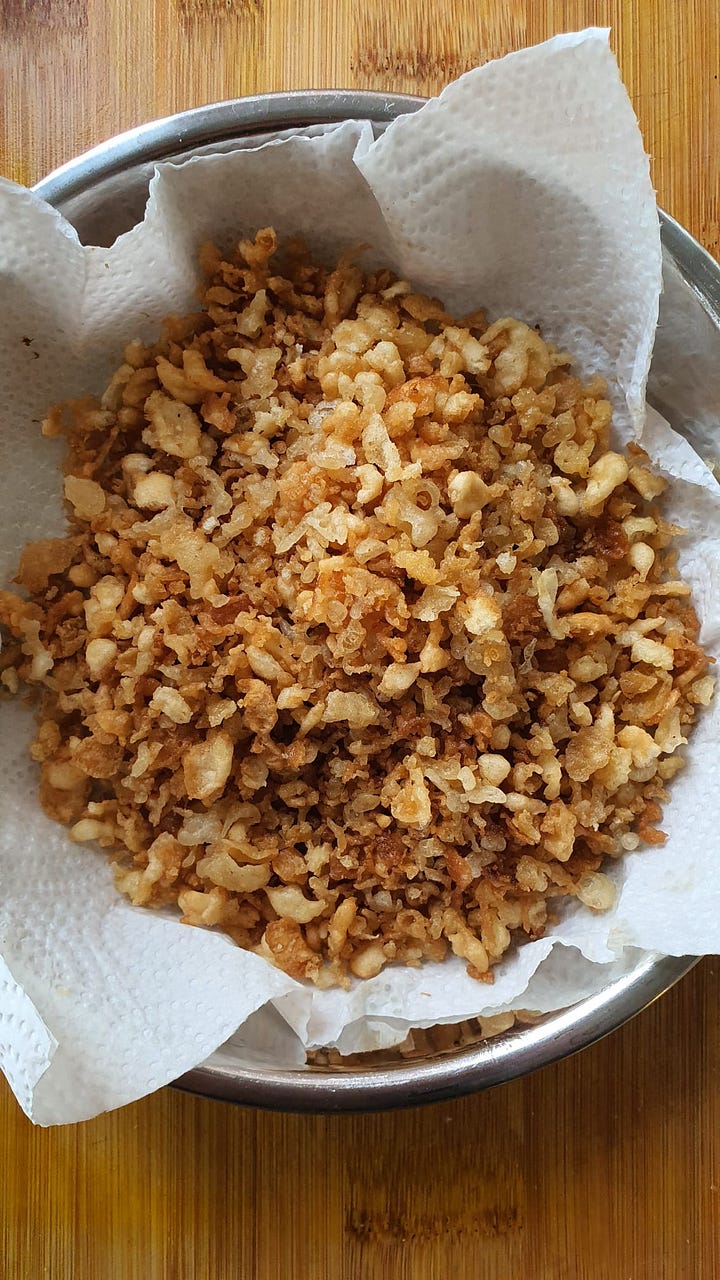
Sambal
What the Marine Parade popiah lacks in its filling, it makes up for in the slick of sambal within each roll. While the popiah made by my in-laws is always accompanied by ground fresh chillies, sharply raw and fiery, the condiment in the Marine Parade popiah is a variation of sambal tumis laced with dried shrimp. I had some multipurpose rempah on hand, so turning it into dried shrimp sambal was light work. It was just a matter of turning soaked dried shrimp to floss, caramelising it in oil, then adding the rempah, gula melaka, and salt. The result is a sultry, no joking around, deeply umami condiment with dangerous pools of chilli oil (which you can decant if you wish).
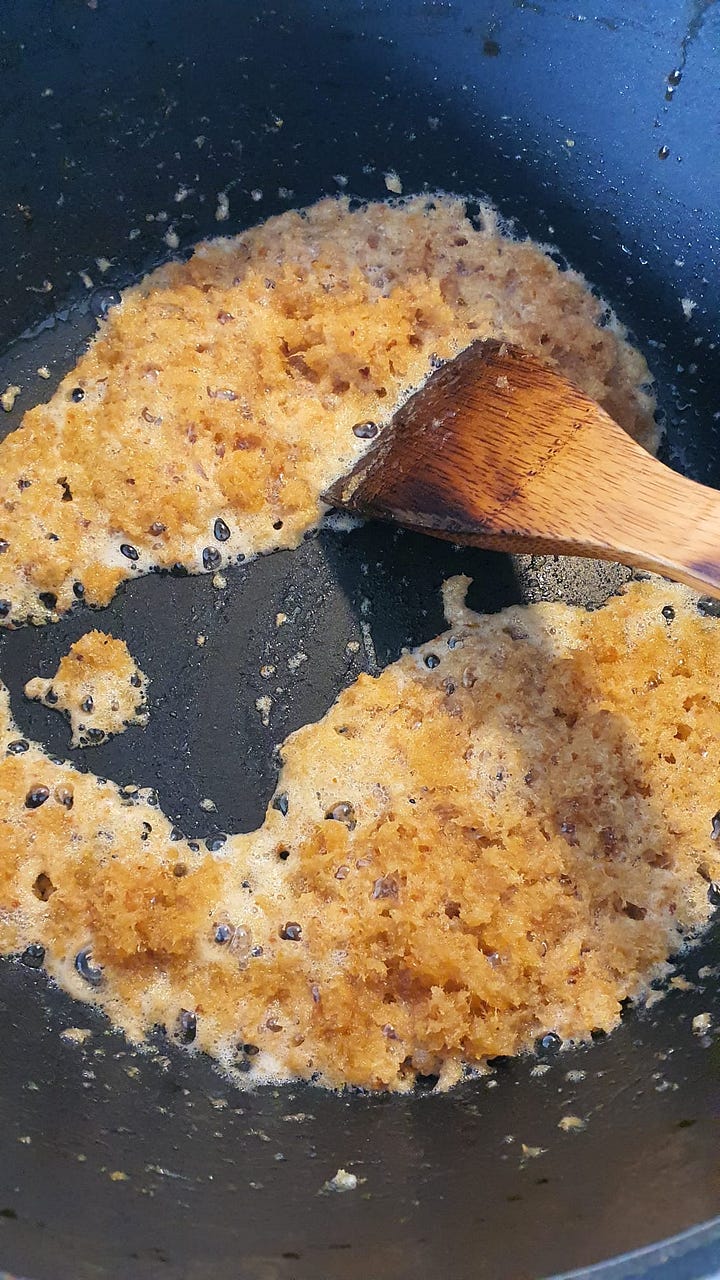
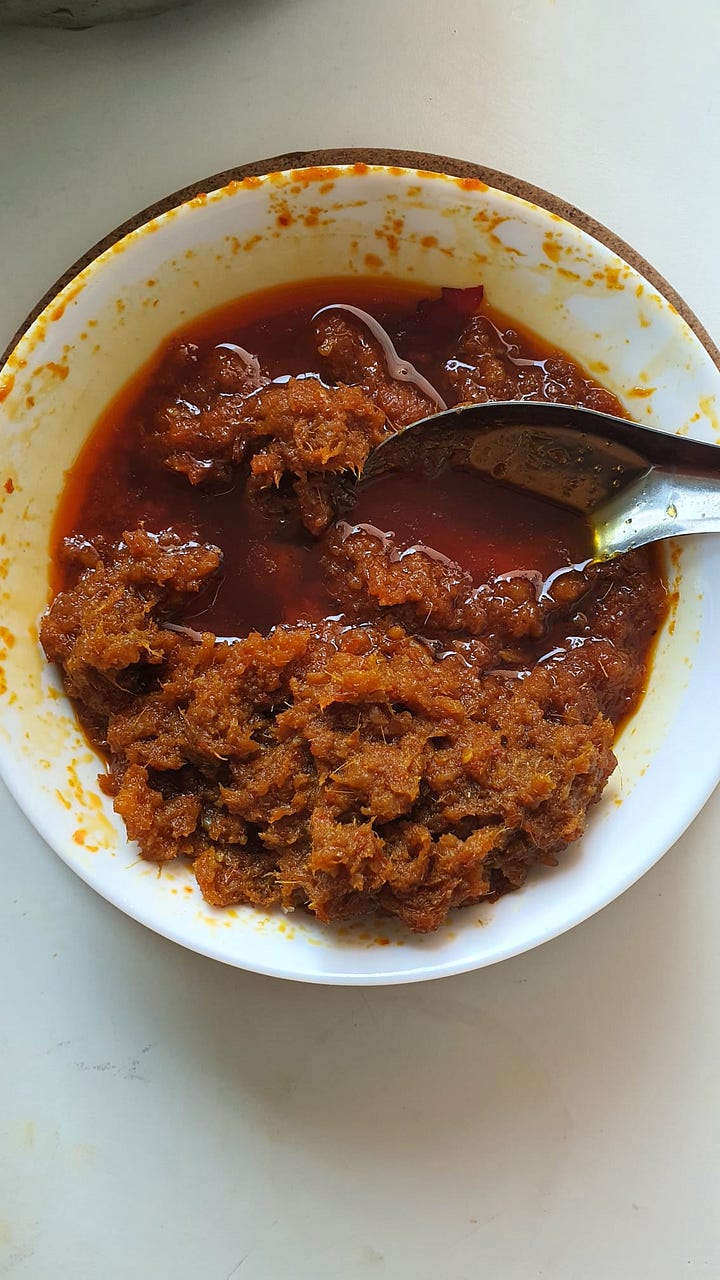
Egg
Egg is a standard popiah condiment that usually manifests as hard-boiled or fried and sliced into strips, but the egg in the Marine Parade popiah seemed like neither of the two. It looked finely diced, which led me to think that it might be hard-boiled egg pushed through a sieve. Yet, it was so uniformly yellow - could it be just the yolk? Can’t be. That would be too expensive and what’s the stall going to do with all that egg white anyway? Eventually, I realised that it was diced fried omelette - canary yellow confetti that adds colour and eggy aroma without bulking up the roll too much.
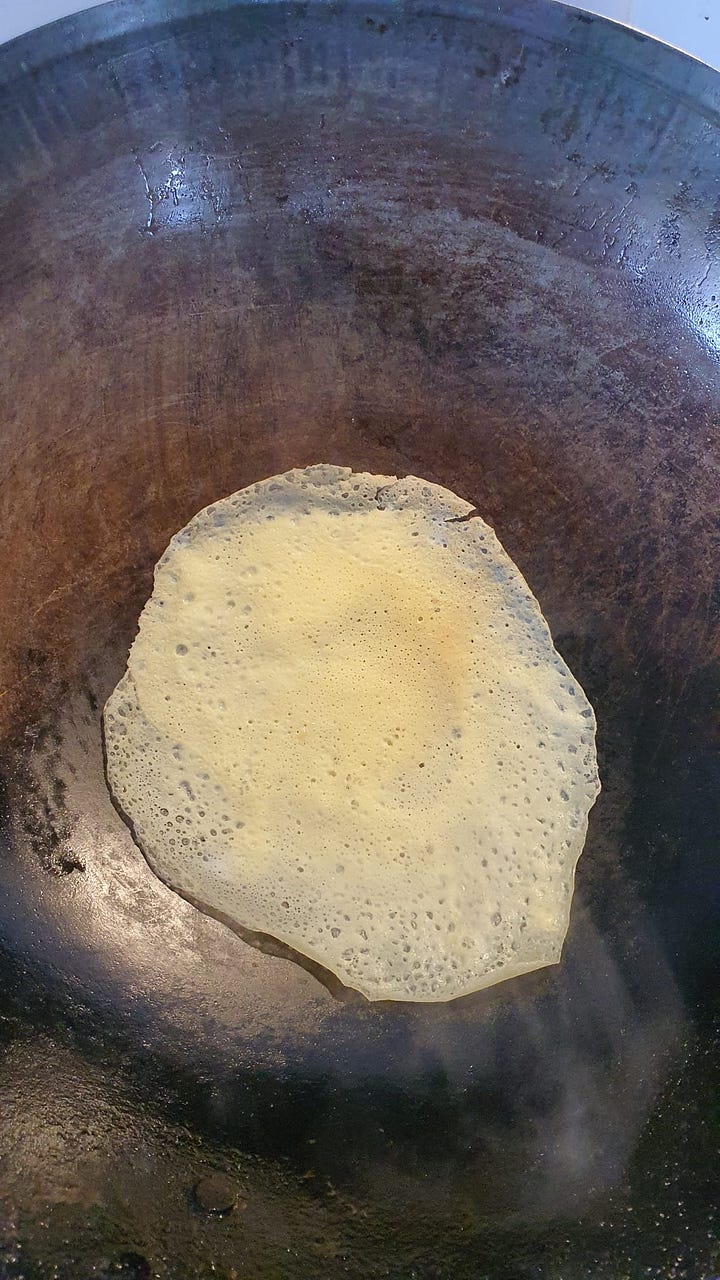
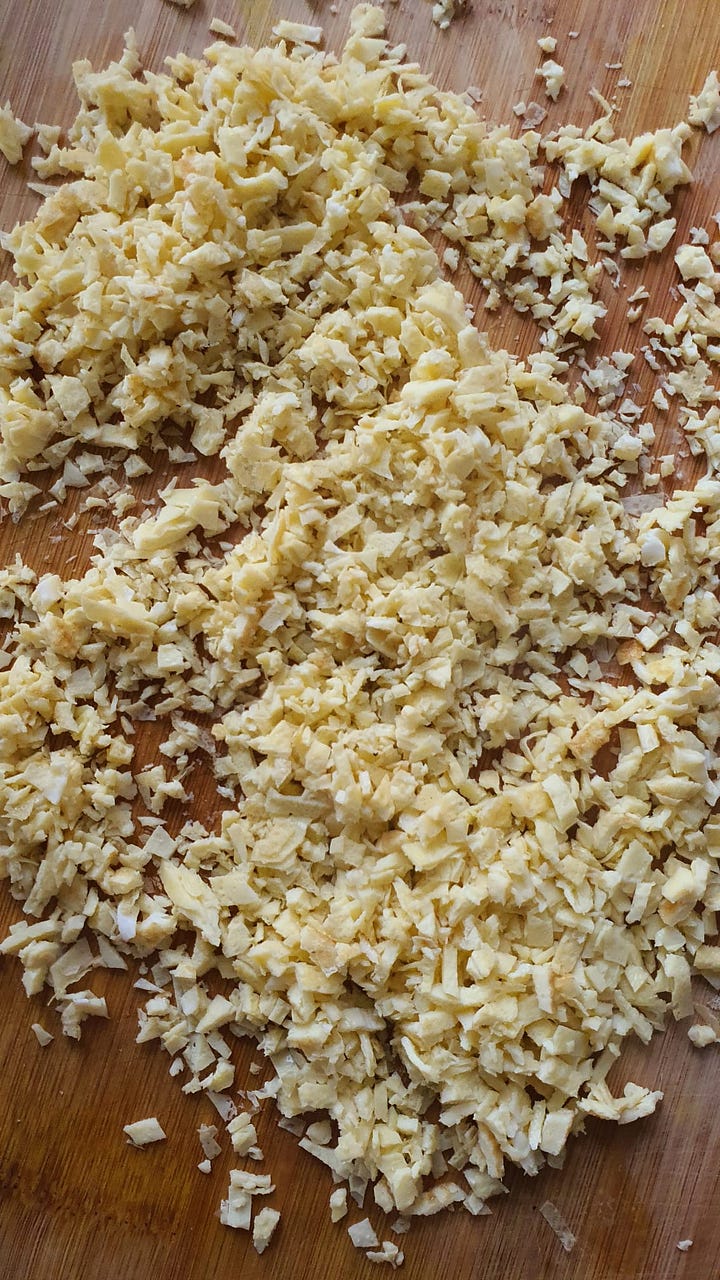
Wrappers
If you have ever been to Singapore or Malaysia, you probably would have come across the scene of a hawker slinging a loose ball of dough - wobbly as jello - in one hand, smearing it across the pan before jerking it back with a sharp jolt of the wrist so that it forms a tissue-thin membrane (see video below for these artisans in action). This works only because of a well-developed gluten network in the dough, the result of a machine’s labour or of the popiah-maker picking the dough up and whacking it against the bowl continuously until it develops spring.
Because my stand-mixer is in Singapore, I made the popiah dough without one, developing its gluten through an overnight rest rather than mechanical action. Still, my dough never got to proper strength and my results were nowhere near perfect. The circles of skin that I managed to wrangle out of the pan were perfect in texture though.
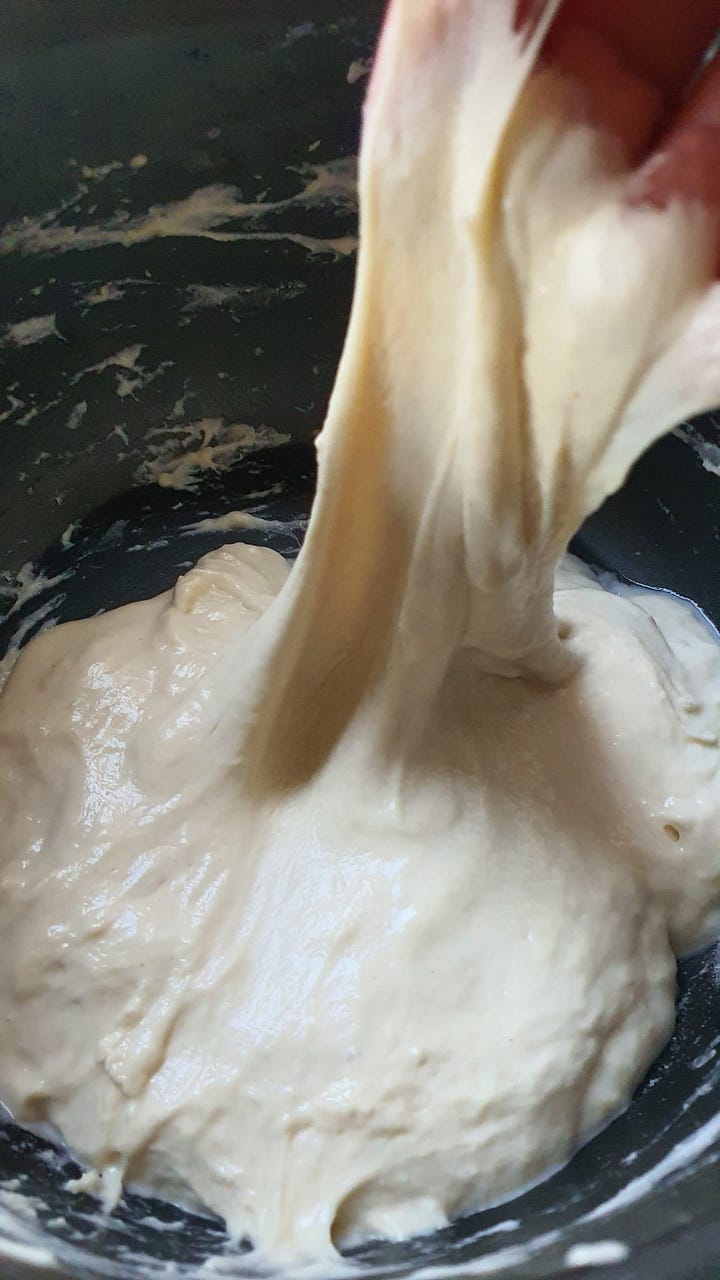
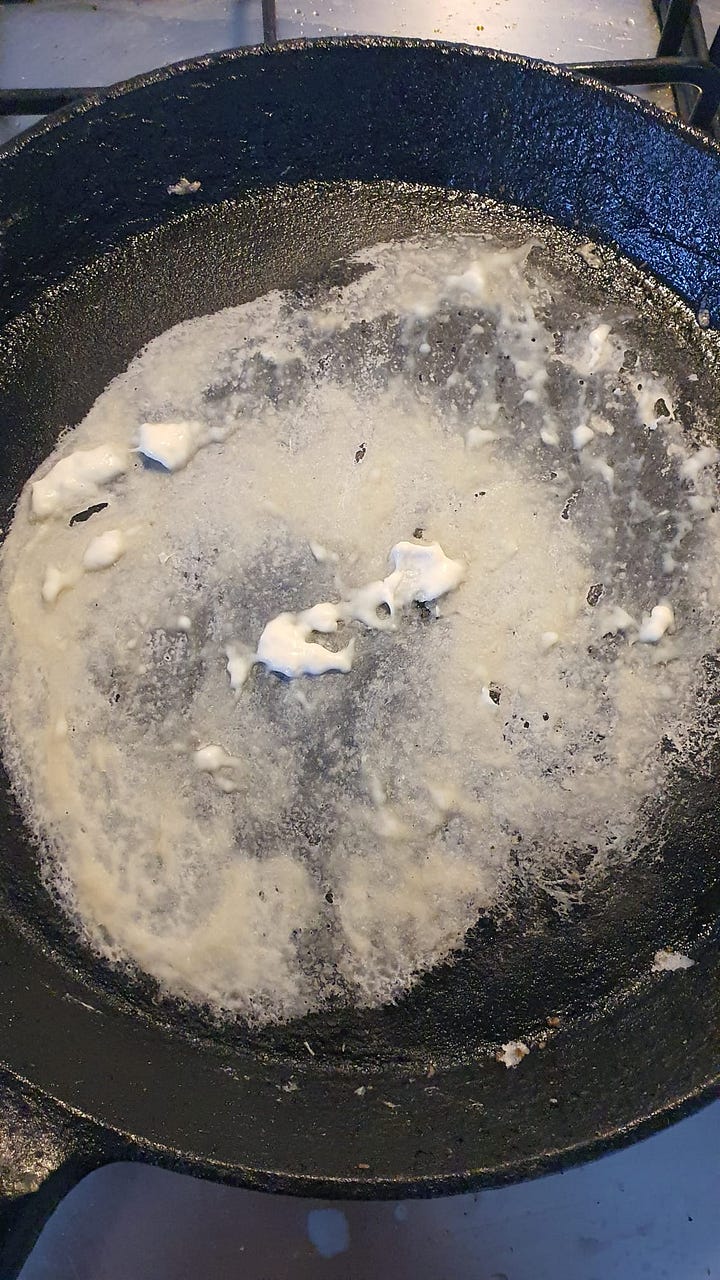
When I posted about my popiah attempts on Instagram, one of my readers, Eunice Yeo, told me that she had seen a Taiwanese chef doing a “painted” version of runbing, a type of spring roll that is very much like popiah. I had come across this technique in Clarissa Wei’s incredible Made in Taiwan and felt that it was the perfect opportunity to give it a go. You whisk together a thick batter, give it a short rest, then brush it onto a hot pan with a brush. It was surprisingly easy, with none of the guesswork or mess of the traditional skins. While the traditional method makes skins of the perfect thickness and resilience, this method produces respectable wrappers despite being on the chewy side, and will be my go-to method while I perfect the traditional version.
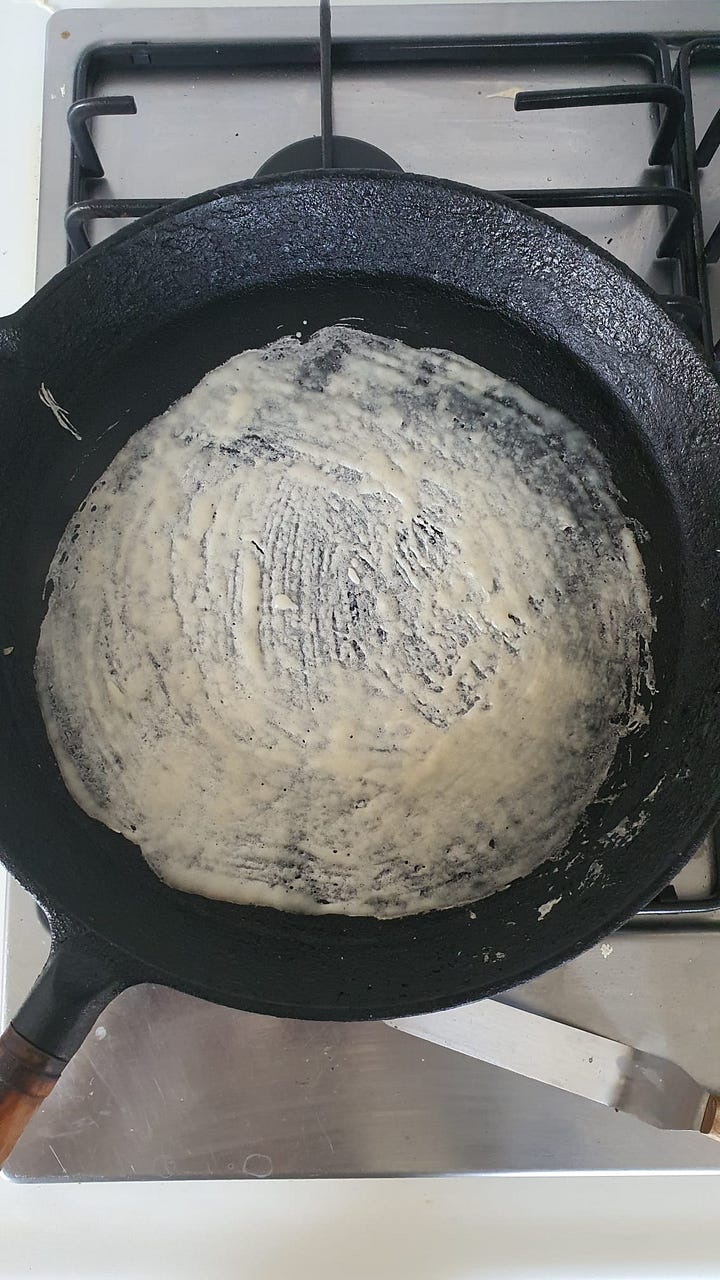
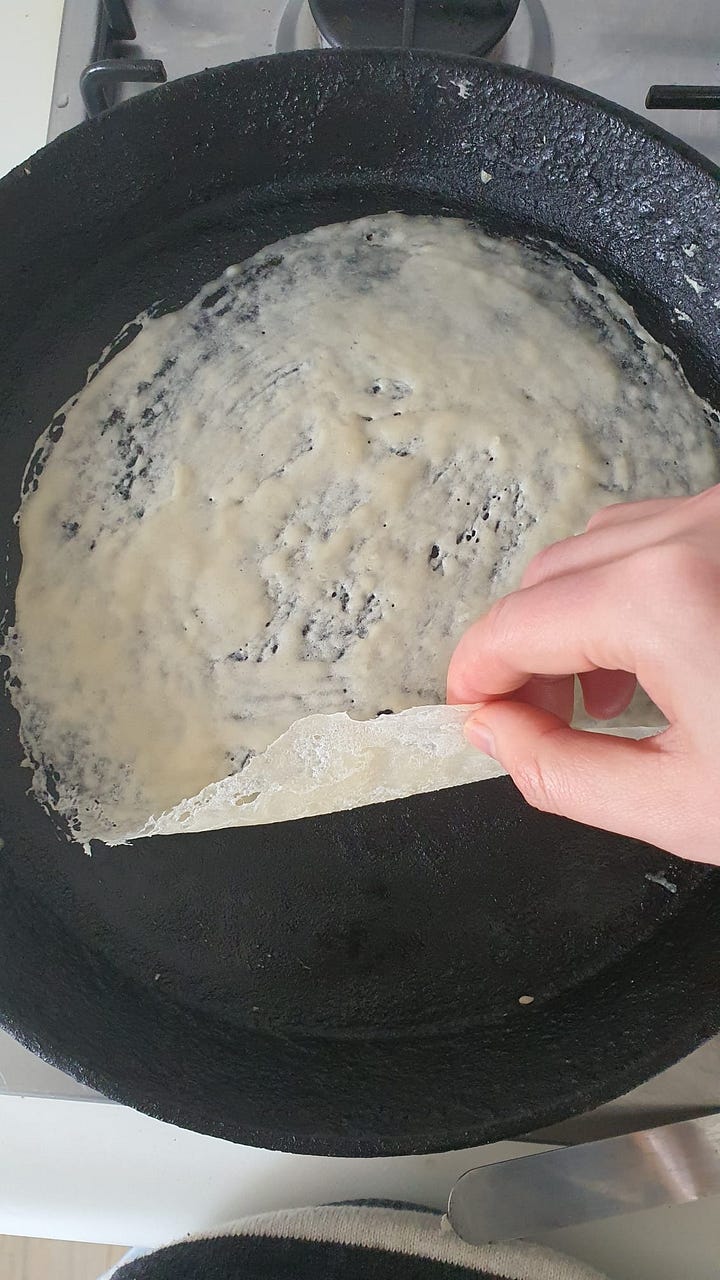
Putting it all together
Most of the time with popiah parties, the host would go ham with luxe condiments such as lapcheong (Chinese sweet cured sausages) and peeled prawns. But this popiah, with no prawns or meat apart from the dried shrimp sambal, was fantastic even to a Hokkien boy like Wex. What went into ours:
Base condiments: kecap manis, minced garlic, dried shrimp sambal (you can substitute this for regular sambal tumis if vego)
Filling: braised daikon and carrot
For crunch: crushed peanuts, crunchy flour bits, julienne cucumber
For colour and fragrance: chopped omelette and coriander leaves
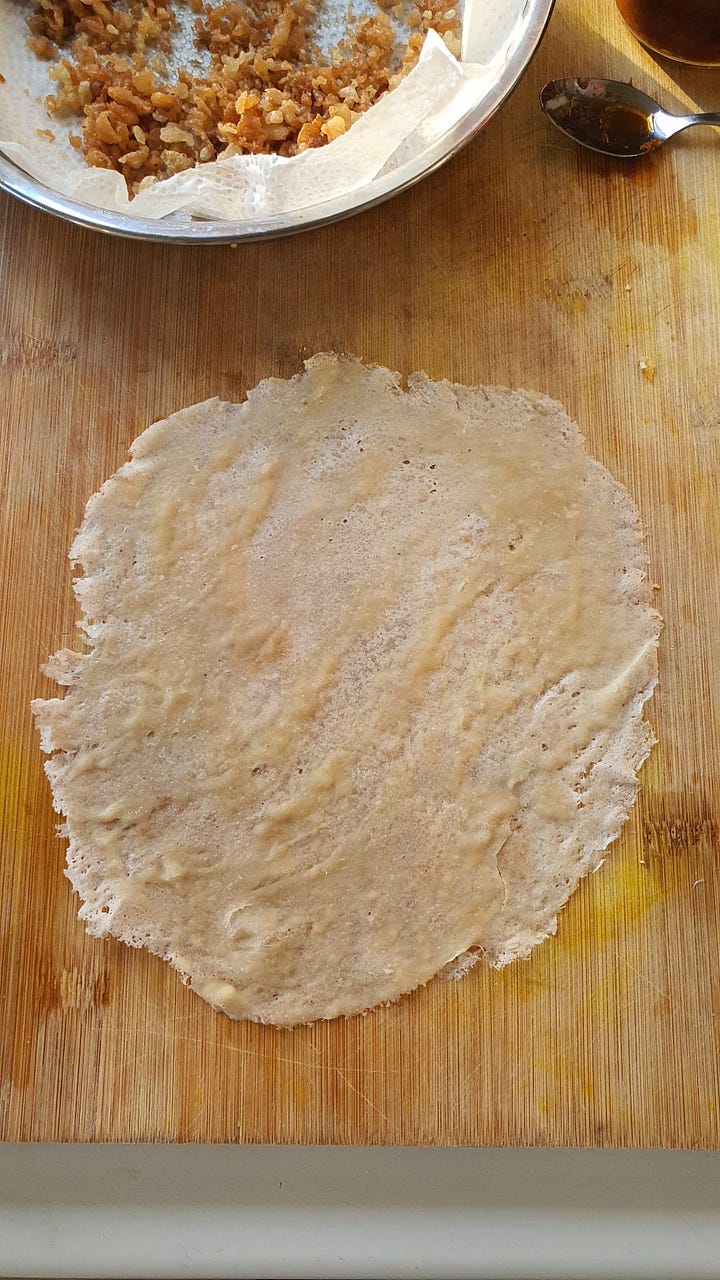
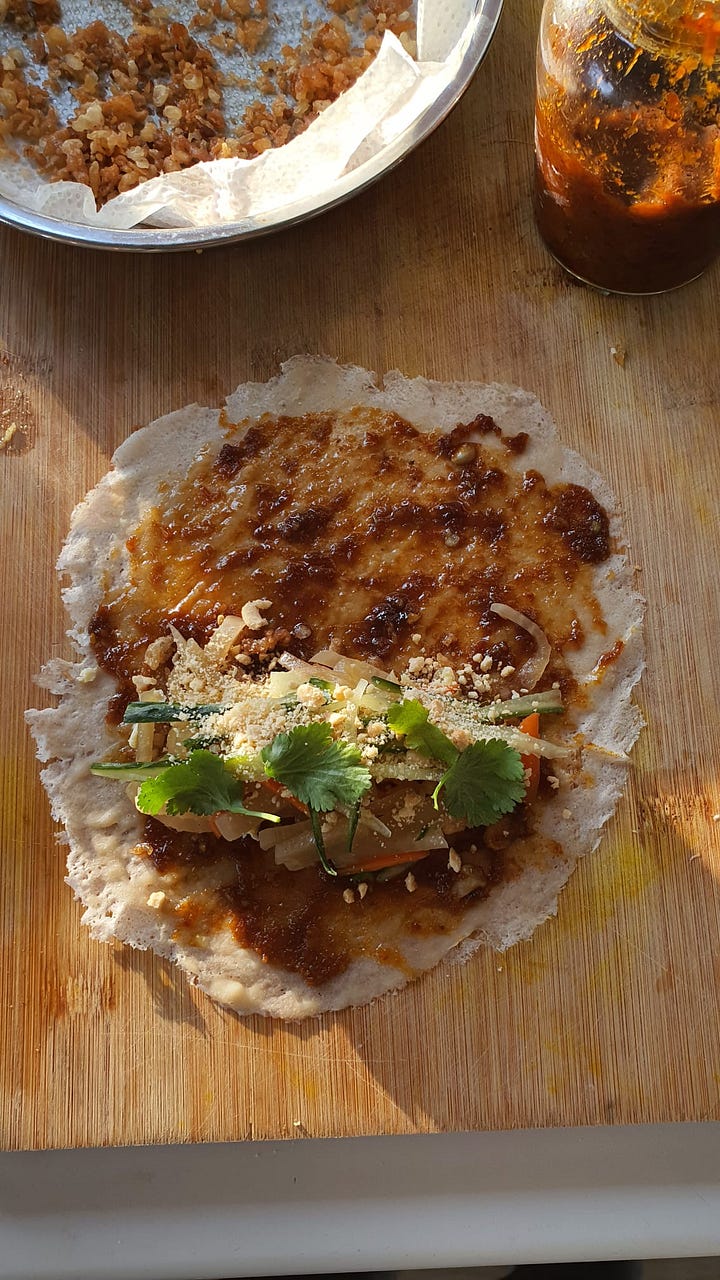
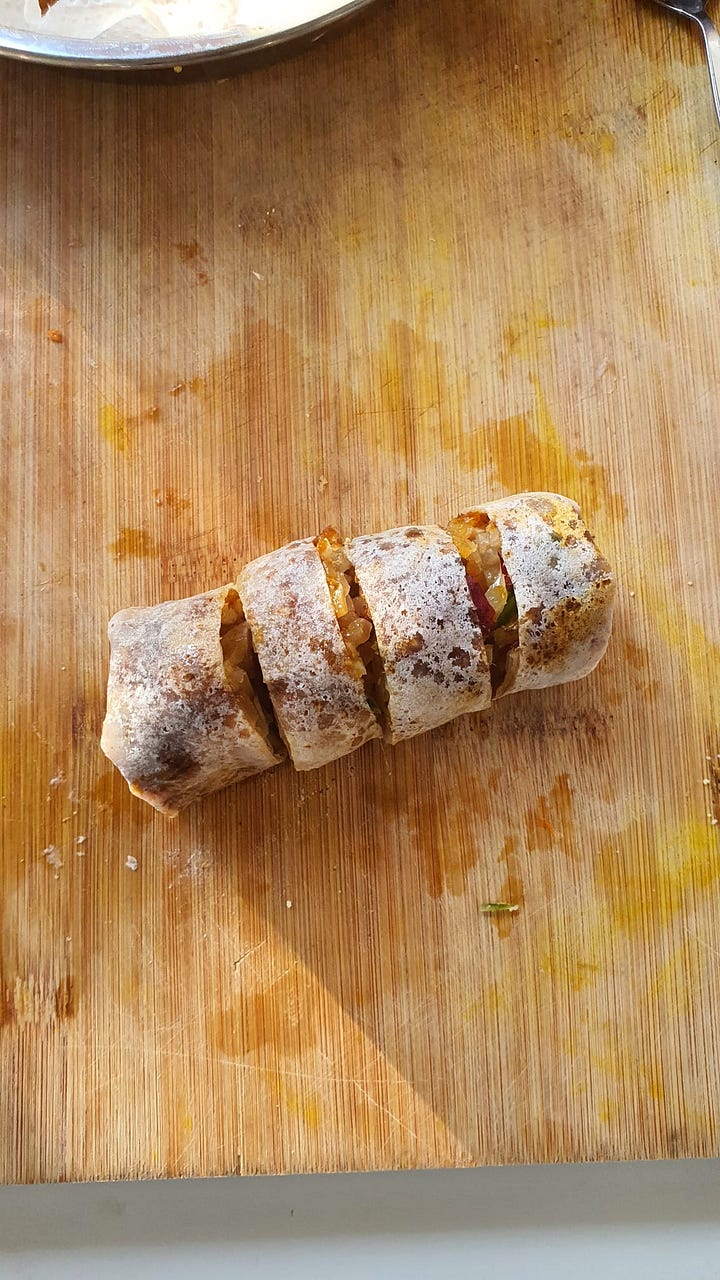
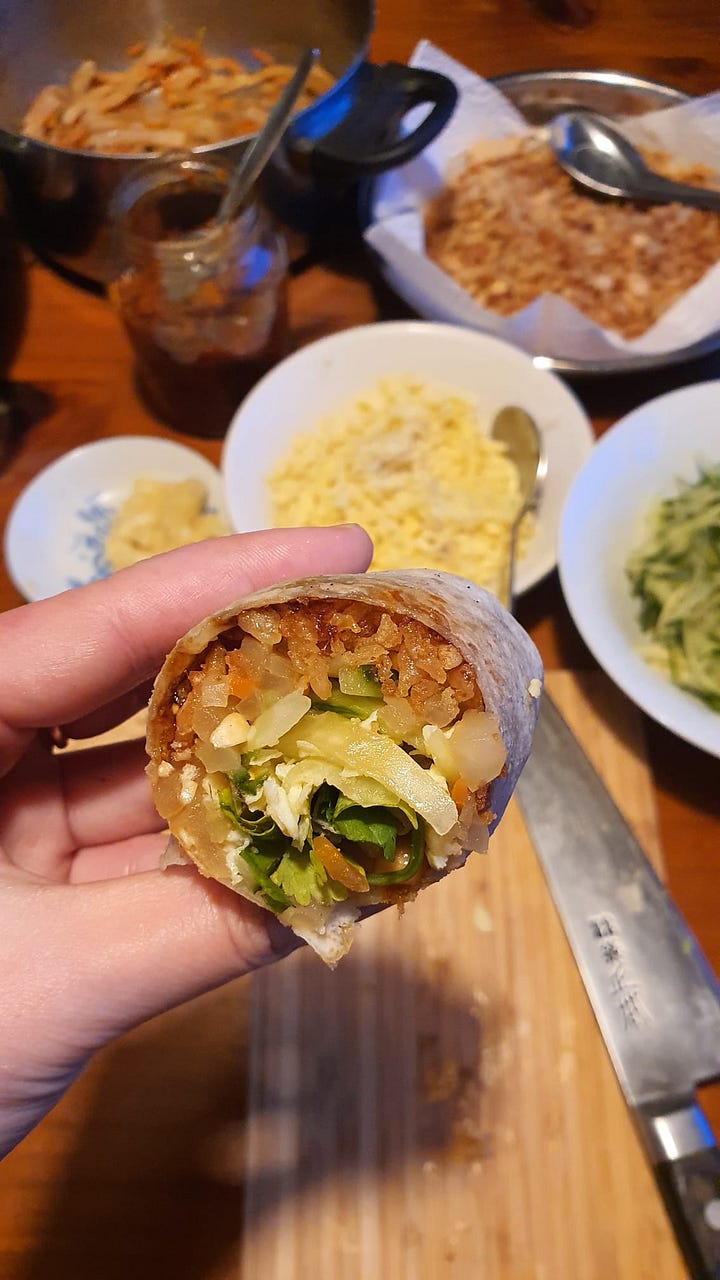
If you are hosting friends this Lunar New Year, I wholeheartedly implore you to give these a go! There’s nothing like a popiah party and, with all the accoutrements laid out separately, this is a welcoming, festive meal for anyone regardless of dietary restrictions.
Popiah
MAKES 4 SERVINGS OR APPROXIMATELY 20 POPIAH

